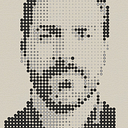Technosophy and Technosopher: theoresis and praxis of a “Digital” Architect&Designer
“knowledge can no longer be ascribed to, or produced within disciplinary boundaries, but is entirely entangled” Oxman, 2016 [1]
Age of entanglement seems at times to be the manifesto against the demolition of the latest disciplinary barriers or rather those placed between theoresis and praxis in cultural speculation in the field of architectural design — age of engagement, the age of involvement, to make a commitment on multiple fronts, seems to be more appropriate.
Techné (skill + craft) ability to perform a certain activity with skill and wisdom — Sophia means “wisdom”, the ability to use one’s knowledge and experience to formulate good judgments or formulate valid decision-making processes. A vision that underlines the already well-known shift of the design paradigm toward a procedural statute that is articulated around the digital elements that characterize the project itself.
Technosophy, therefore, is for me a kind of engineering philosophy applied to real problems.
The ability to articulate the technological project through its own digital elements has cleared the code of scripting/coding by integrating it directly into the pure design act for what purpose? — that of getting closer to the “modelization” of the built environment with its endogenous and exogenous peculiarities and at the same time allowing the designer to find a valid “tool” — all of this is largely enclosed in the concept of computational thinking and is the basis of the digital design nowadays — (building own tools is an ancient practice shortly this is my vision).
How is it possible to focus on the cultural speculative aspects and the practical dimension?
With good reason we must start from the word Tools, attention not as commonly we mean a sort of BlackBox that is expected to make things work or that tells a project story instead of the designer, but rather as a metaphor for a tool, a cognitive tool — metaphor in the sense of not interpreting it as a physical/mechanical artefact but rather as a managerial tool, for the management and organization of processes that constantly give us feedback of any kind. This procedural statute enhances what in my opinion is the most important soft skill in the digital age, which is the ability to solve problems — Problem-solving and before that problem making.
Thus a fairly tenacious and evident asset is configured in the production of the digital project consisting of the triad Data — Digital — Design. The given something that is taken as it has no project value but if it is properly structured it can be transformed into something useful, that is, into information and thus a certain scientific bibliography (which also passes through Prof. Antonino Saggio) attributes to the built environment the value of data-space an informed, informative and informed space — it is here that the virtual and artificial aspect of Krueger and Rheingold is revealed (not the Cyberspace that appeared in Neuromance ‘s 1984 William Gibson).
In any case, computational thinking allows for the organisation of this informed and informatic space and at the same time enhances the ability to interpret natural and artificial habitats.
Design techniques, on the other hand, tend to affect the tactical level with which one approaches to design. If the strategy is the way in which the general objectives to be pursued are identified, as well as the ability to identify the most suitable means to achieve them, its implementation will require a specific process. The tactical aspect inherent in digital design techniques, therefore, concerns a dynamic action in which the process changes and adapts to subsequent challenges (Sevaldson, 2005: 32)[2]. On the other hand, elaborating a design strategy requires a more specific cultural and overall vision effort and, in this sense, the diagrammatic logic borrowed from the world of information technology (i.e. computational thinking) that facilitates the work of the digital designer, i.e. looking at objects no longer as such but as a succession of events, helping him to focus attention on the process.
In the Digital Age, it often happens that strategies and techniques tend to overlap and this overlapping inevitably produces an expressive and conceptual acceleration of the way in which the meanings of time, space and interaction are intrinsically articulated in the digital project (Frazer, 1995: 8 )[3]. All of this interests and involves the work and responsibilities of the digital designer ever more closely.
Conclusion
by hermetically summarizing this vision, the essential element in all the methods of digitized inference is aimed at revealing the intended space as a habitat, they relentlessly aim at the concept of Closing the gap — of “closing the cycle” — that is, guaranteeing that the real-life experience of the end-user is re-introduced into the technological design process and at the same time, allow us, allow the researcher/designer, through a series of possible research methods and instrumental metaphors, to construct a story of a problem or a research demand in order to extract meaning and therefore learn from it.
You can find the 🇮🇹 version on my website here
References
the cover is my personal graphic elaboration inspired by Neuromancer comix and the art of UNHIDE school on Bēhance with a bit of “spaghetti” design
[1] Oxman, N. (2016). Age of Entanglement. Journal of Design and Science. https://doi.org/10.21428/7e0583ad
[2] Sevaldson, B., (2005). Developing Digital Design Techniques. Investigations on Creative Design Computing. Doctoral thesis. Oslo, Oslo School of Architecture and Design, p. 32.
[3] Frazer, J. (1995). An evolutionary architecture. London, Architectural Association, p. 8.
[4] Garber, R. (2009). Closing the gap: information models in contemporary design practice. Chichester: Wiley.
[5] Ambrosini, L., (2018), Data, Digital & Design — Produzione del progetto digital e processi decisionali: la progettazione “flessibile” nell’Era dello Scripting e del Building Information Modelling come nuovo paradigma tecnologico, PhD thesis in Architecture. XXXI ciclo, DiARC, Università di Napoli “Federico II”. DOI: 10.13140/RG.2.2.27158.29769
